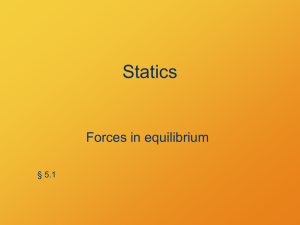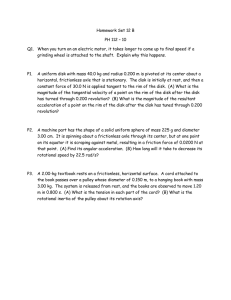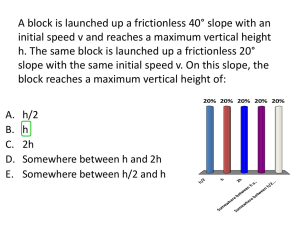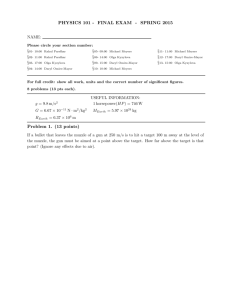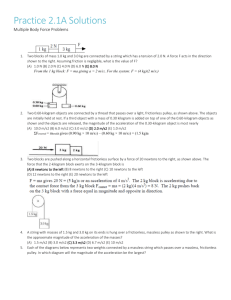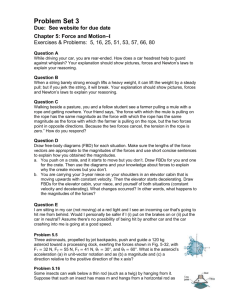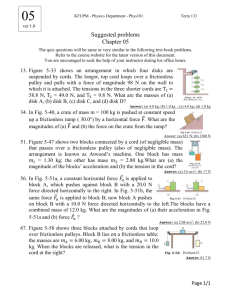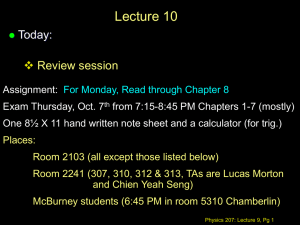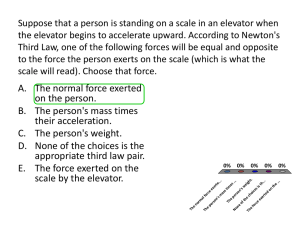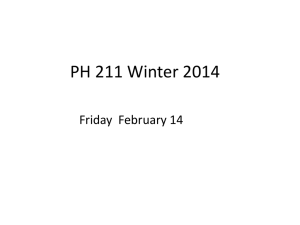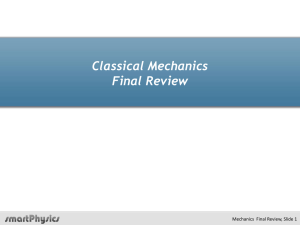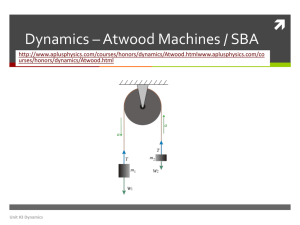AP Physics Lecture Notes
advertisement
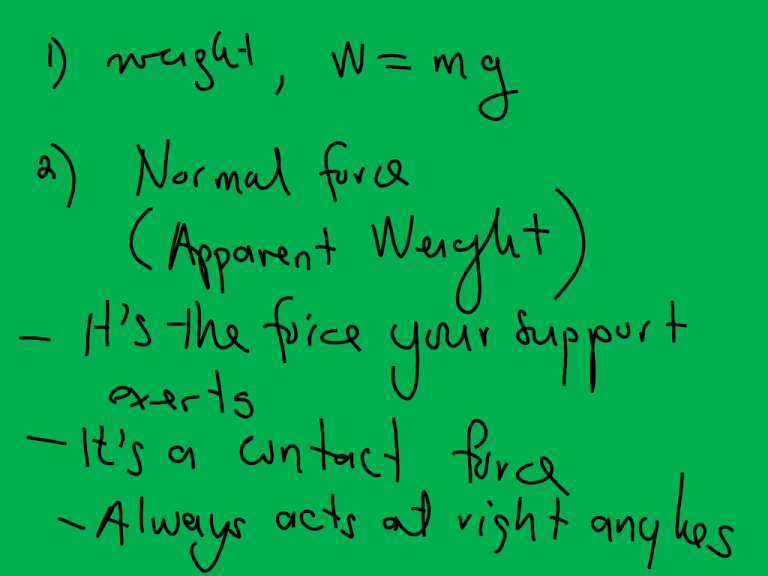
When a car accelerates forward on a level roadway, which force is responsible for this acceleration? State clearly which body exerts this force, and on which body (or bodies) the force acts. Two blocks connected by a rope of negligible mass are being dragged by a horizontal force F . Suppose that F = 68.0 N, m1 = 12.0 kg, m2 = 18.0 kg, and the coefficient of kinetic friction between each block and the surface is 0.100. (a)Draw a free-body diagram for each block. (b) Determine the tension T and the magnitude of the acceleration of the system. Three blocks are in contact with each other on a frictionless, horizontal surface, as in Figure P5.54. A horizontal force F is applied to m1. If m1 = 2.00 kg, m2 = 3.00 kg, m3 = 4.00 kg, and F = 18.0 N, draw a separate free-body diagram for each block and find (a) the acceleration of the blocks, (b) the resultant force on each block, and (c) the magnitudes of the contact forces between the blocks. A bag of cement of weight 325 N hangs from three wires as suggested in Figure P5.18. Two of the wires make angles 1 = 60.0 and 2 = 25.0 with the horizontal. If the system is in equilibrium, find the tensions T1, T2, and T3 in the wires. Two of the wires make angles 1 and 2 with the horizontal. If the system is in equilibrium, show that the tension in the lefthand wire is T1 = Fg cos 2 /sin(1 + 2 ) draw a free-body diagram of a block which slides down a frictionless plane having an inclination of = 15.0° If the block starts from rest at the top and the length of the incline is 2.00 m, find (a) the acceleration of the block and (b) its speed when it reaches the bottom of the incline. A block of mass 3.00 kg is pushed up against a wall by a force P that makes a 50.0 angle with the horizontal as shown in Figure P5.46. The coefficient of static friction between the block and the wall is 0.250. Determine the possible values for the magnitude of P that allow the block to remain stationary. A 5.00-kg object placed on a frictionless, horizontal table is connected to a cable that passes over a pulley and then is fastened to a hanging 9.00-kg object,. Draw freebody diagrams of both objects. Find the acceleration of the two objects and the tension in the string. Two objects are connected by a light string that passes over a frictionless pulley, as in Figure P5.26. Draw free-body diagrams of both objects. If the incline is frictionless and if m1 = 2.00 kg, m2 = 6.00 kg, and = 55.0°, find (a) the accelerations of the objects, (b) the tension in the string, and (c) the speed of each object 2.00 s after being released from rest. • Three objects are connected on the table as shown. The table is rough and has a coefficient of kinetic friction of 0.350. The objects have masses 4.00 kg, 1.00 kg and 2.00 kg, as shown, and the pulleys are frictionless. Draw free-body diagrams of each of the objects. (a) Determine the acceleration of each object and their directions. (b) Determine the tensions in the two cords. An inventive child named Pat wants to reach an apple in a tree without climbing the tree. Sitting in a chair connected to a rope that passes over a frictionless pulley , Pat pulls on the loose end of the rope with such a force that the spring scale reads 250 N. Pat's true weight is 320 N, and the chair weighs 160 N. (a) Draw free-body diagrams for Pat and the chair considered as separate systems, and another diagram for Pat and the chair considered as one system. (b) Show that the acceleration of the system is upward and find its magnitude. (c) Find the force Pat exerts on the chair. An object of mass M is held in place by an applied force F and a pulley system. The pulleys are massless and frictionless. Find (a) the tension in each section of rope, T1, T2, T3, T4, and T5 and (b) the magnitude of F. Suggestion: Draw a free-body diagram for each pulley. A body of mass m is suspended from a spring with spring constant k in configuration (a) and the spring is stretched 0.1m . If two identical bodies of mass m/ 2 are suspended from a spring with the same spring constant k in configuration (b), how much will the spring stretch? Explain your answer.
